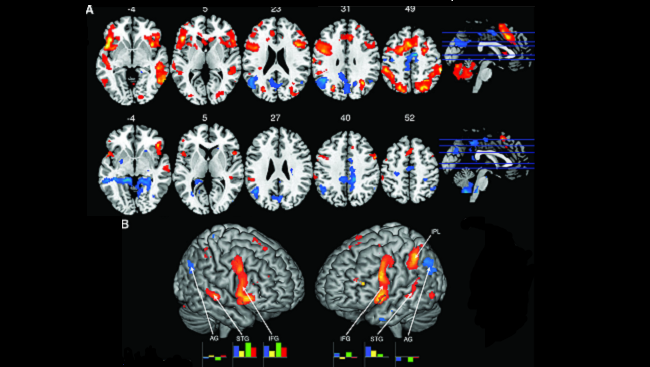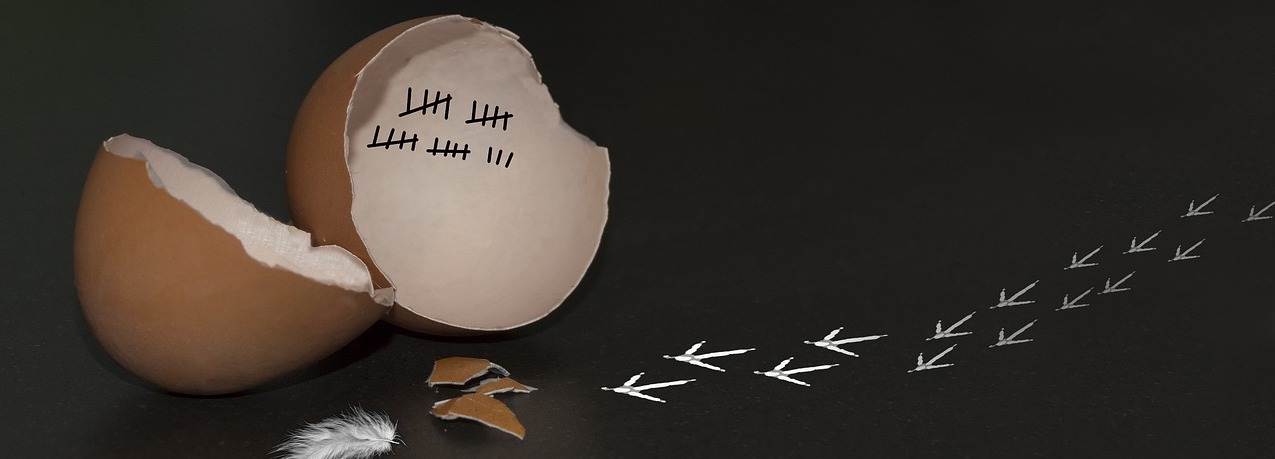Creativity …
The Oxford dictionary defines it as “the use of imagination or original ideas to create something”. We often associate it with inspiration, inventiveness and imagination. With space and vast horizons. With Eureka moments and thinking out of the box.
There are many different ways in which creativity can help you in discovering what you want. For example, it can help you imagine other ways you could live your life. Or to find clever solutions to deal with habits that get in the way of getting where you want to be. It can support you in shaping different strategies to gain knowledge and skills. Or in identifying smart tactics in overcoming obstacles on your journey.
This edition of Maxand’s Insights is all about how you can develop your own creativity in discovering what you want.
Before I proceed, let me clarify something first. In daily life, we sometimes use the word creativity in relation to specific groups of people; people who create some form of art. Think of musicians, painters, sculptors, architects and fashion designers. However, in this article, I’m not using the word creativity to indicate specific groups. I’m using it in a much broader way. As a skill each of us has in our own unique way. A skill we can further develop.
1. Are we all creative?
1.1 Creativity and humankind
Let’s step back for a moment and look at our development as a human species. Over millions of years, we developed into beings with hardly any physical defence mechanisms. No claws or fangs with poisonous venom. Or a thick skin armour to protect us from attacks. No big fur to shield us from raging blizzards. Or massive acceleration power in our legs to outrun a bear or lion.
As a biological species, we could not have survived without being creative. We’ve needed to be smart to avoid getting eaten by predators. Or to avoid dying from freezing cold or tropical diseases. We’ve needed to think of clever ways to find food and water. And we’ve needed to use our imagination to make hideouts that would protect us from rival neighbouring tribes. In short, creativity has always been key to our survival.
1.2 Our own individual creativity
So as a species we’ve simply had to be creative. But how about each of us as individuals? If you look around you, you can probably identify people who are very good at creative thinking. And others who are less so. As individuals, we do indeed differ in terms of our creative tendencies and abilities. Different factors play a role in this. From how our brain is wired as a result of our DNA, to early childhood experiences and development, to the attitudes of the people around us.
Most of us come into the world with a very open outlook. We spend our first years on this planet not knowing what things are for and how things are done. An object that has only one use in the eyes of adults can have many more other uses or could represent so many more things in the eyes of a child.
As we grow older, we learn what things are for. How things are done. Which things are important. We learn how to live our lives in the physical and social environment we find ourselves in. We also become more conscious of ourselves and what others might think of us. Many of us feel pressure to conform and to fit in. And given that we as humans need others to survive, you could argue that this is a very sensible thing to do.
But it also means that – over time – many of us become less open to other ways of seeing the world and our own place in it. To other ways we may live our lives. We run the risk of getting stuck in habits and routines that allow little room to explore. And little room to be more creative in our thinking.
Let me be clear … habits and routines aren’t a bad thing! From an evolutionary perspective, being able to form habits and routines has given us a definite advantage. After all, to do things the same way consistently saves energy. And that’s important if you can’t always be sure that you have enough food.
It could be a tremendous waste of energy if you’d have to think of new and unproven solutions for every single thing, every single day or every single season. It’s much better to find a way that works and then stick to it. So while we are by nature a creative species, we’ve also needed habits and routines to survive (if you’d like to know more about how to break habits that get in your way and make habits work for you, also see the article “Habits: Your worst enemies … or your best friends“).
Creativity and habits/routines aren’t opposites. Yet, many of us – at some point in our lives – find ourselves feeling like we’ve somehow gotten stuck in a certain way of life and the habits and routines that come with it. We feel like we’re lacking creativity to help us find other ways.
So how could you get more creative? And how could you perhaps build habits and routines that support you in doing so?

2. How can you develop your creativity? ¹
The key to developing your creativity is understanding that different parts of your brain are involved in generating new ideas. Contrary to popular belief, creativity is not something that is “situated” in a particular section of the brain, for example the left or right side. Instead, many different parts of your brain combine all kinds of information in unique ways to develop new ideas. Often without you being very conscious of it.
In addition, neuroscientists have found that not only different parts of the brain are involved in creativity, but also different neural networks (if this sounds a bit unfamiliar, have a look at the article “Meet your biggest ally: Your brain” for an overall outline of how the brain works).
The so-called “Default Mode Network” is activated when the mind wanders freely and new ideas are developed spontaneously and often subconsciously. It’s often seen as representing a more relaxed state in which you’re not thinking of anything in particular. The so-called “Executive Control Network” tends to get activated in more focused, task-oriented kinds of thinking. And then there is the “Salience Network”, which plays an important part in switching between the two. (Don’t worry about the specifics of these networks. The most important thing to understand is that different ones are at play. Scientific references are included below for those of you who want to do a bit more background reading.)
Advances in neuroscience technology have allowed researchers to better understand how the different areas and networks of the brain work together in creative thinking. Much remains to be discovered, but based on current available insights there are a number of things you can do to develop your creativity. They include the following:
- Switch between different thinking modes
- Give your brain “incubation time”, but keep triggering it regularly
- Have more building blocks available to create new ideas from
- Always be ready to “catch” new ideas
- Practice the skill of thinking “out of the box”
- Help your brain to stay fit and healthy
In the paragraphs below, we’ll look at each of these in turn. Jointly, they cover quite a broad range of different concepts. As you go through each of the 6 topics, give yourself enough time to think about them a bit. Examine how you could make them practical in your particular situation. Everyone’s life is different, so the way these concepts might translate to yours is something very personal. You may even want to tackle the topics one by one, putting the article aside for some time in between topic areas. Find what works for you in making the most of the concepts, tips and tools offered. There’s no right or wrong here …
2.1 Switch between different thinking modes
Creativity is supported by very different modes of thinking; from very focused to unfocused and free. You can help the process of idea generation along by setting yourself up in such a way that there’s a time and place for both.
A. Focused mode of thinking => consciously developing ideas about what you want
Let’s say you’re in the process of discovering what you want. If you really have no idea, your first question is likely a general “What do I want?” It’s also entirely possible that you already have an inkling of what you want, but wonder which steps you could take to get there or how to scale a specific hurdle that you see along the way.
In trying to find possible answers to your own question(s), the first thing you can do is to spend some time consciously trying to think of new ideas. This activates the so-called “Executive Control Network” mentioned above.
Find some time to yourself and try to come up with as many ideas as possible. Here are some tips:
- Look at your question(s) from different angles. For instance, by asking yourself what elements could perhaps be part of the answer or solution. What success would look or feel like. Which skills you could use in either answering your question(s) or in making the answers happen. What is unique about you or your life/situation that you could actually use to your advantage. Et cetera …
- In addition, using different materials in your thinking process may help you come up with more ideas. Depending on your personal preferences and the things available to you, you could for example use post-its, colourful pens and different craft supplies. Using diverse materials will trigger different parts of your brain by engaging different senses. Which in turn may help connecting different pieces of information that could lead to unexpected new ideas.
- Take your time. Ideally, this really feels like a moment of quality-time with yourself in which you have room to explore.
- Capture your ideas in whichever way works for you. For example:
- Write your ideas down on a piece of paper. Writing – particularly writing that follows your so-called “stream of consciousness” – can be a very effective way to increase clarity and develop additional ideas (also see the article “Burning through the fog in your mind” for more guidance on writing as a discovery technique).
- Similarly, using images – such as drawings, paper clippings or pictures you’ve found online – can be a very powerful tool to both reflect your ideas without any words necessary as well as generate new ones (also see the article “Using images in discovering what you want“).
Keep going with this focused process until you find that you have no more ideas.
At this stage, there are a few possible outcomes of this initial process. First of all, it is entirely possible that you end up with some great ideas around what you want or how to get there. Great! You can start to take steps, if you’re ready to do so.
But perhaps you haven’t found any ideas that seem viable. Or no ideas at all. That’s perfectly ok! It’s actually even more than ok, as this step is an essential part of the process of generating new ideas. You see, this moment of focused thinking triggers your brain into continuing to develop ideas around your question(s). Even when you’ve stopped consciously thinking about them.
Store whatever ideas you have in a safe place and let them be until you’re ready to get back to them to develop more ideas (also see chapter 2.2 below).
B. Unfocused mode of thinking => new ideas getting developed unconsciously
While you’re taking a break from thinking about your question(s) in a very conscious and focused way, you’re off to doing other things. Like going to work. Sitting on the couch watching tv. Spending time with loved ones. Doing sports or a hobby perhaps …
Take a step back and analyse the things you’re filling your time with. Examine how much of your time is spent doing something that requires you to focus in some way (and to avoid confusion: leisurely meeting with friends, reading social media posts and watching tv may represent downtime to you, but these activities do require your brain to focus. After all, you need to pay attention to people around you or to the things you’re reading and seeing).
As a next step, analyse how much time you spend simply letting your mind wander where it wants to go. For example, the moments when you’re waiting for your bus to arrive and aren’t paying attention to anything in particular. Or when you’re taking your dog for its regular walk and just dream away a little as you stroll along.
You may find – as is the case for many of us – that you don’t spend a lot of time letting your mind wander. Or that you’re turning potential moments for mind wandering into moments of focused thinking as you grab your phone to check for the latest messages or news.
 As discussed above, this mode of thinking in which your mind can wander freely activates a very different neural network in your brain, the so-called “Default Mode Network”. It’s when different parts of your brain spontaneously combine bits of information in new and unexpected ways. Basically, what happens is that ideas get generated without you being conscious of it happening (and it’s why sometimes the best ideas come to you when you’re for example taking a shower).
As discussed above, this mode of thinking in which your mind can wander freely activates a very different neural network in your brain, the so-called “Default Mode Network”. It’s when different parts of your brain spontaneously combine bits of information in new and unexpected ways. Basically, what happens is that ideas get generated without you being conscious of it happening (and it’s why sometimes the best ideas come to you when you’re for example taking a shower).
If it turns out you barely have any moments in your daily life when your mind can just wander, chances are you’re missing out on some serious subconscious brain power in generating new ideas. Having more of those moments can actually help you come up with more and different possible answers to your question(s).
But in our productivity-oriented world with high internet connectivity, letting our minds just wander where they want to go is unfortunately often easier said than done.
Here are some general tips:
- First of all, let go of any feeling that you have to “do” something all the time. That your time isn’t spent in a useful way unless it leads to some kind of result. Give yourself permission to do nothing in particular for a while.
- So-called “energisers” – short exercises or games – are a great way to break out of a more focused mode of thinking. Something physical is usually very effective, as it engages most of your senses. So do a little dance. Have a tug-of-war with the dog. Play a game with the kids. Humour and playfulness are also a great way to get into a more relaxed state, so doing something that makes you laugh can have added bonus here.
- To get into a mind wandering state, do something that you find relaxing and that doesn’t require a lot of conscious attention. Stare out of the window. Doodle on a piece of paper. Take a shower. Listen to music that relaxes you. Take a nap. Cook something you can make on autopilot. Go for a walk (or for those of you who are fit, go for a jog). And while you’re doing these things, just let your mind wander. Do not focus on anything in particular. Let your thoughts and feelings go wherever they want to take you.
- When your mind wanders freely, it may sometimes wander to themes which you spend a lot of time thinking about already at other moments of the day. Work would be a typical example. If this happens every now and again, it’s fine. But if you always end up thinking about the same subject when you allow your mind to wander, this may also be a sign that your brain actually remains in some sort of focused state targeting this subject area. So if you find your mind wandering to the same topic over and over again, ask yourself if you might be getting too tied up in this particular topic. If so, see if you can decrease your focus on it, perhaps by also getting more engaged with other things and people in your life.
- While it’s not necessarily a pleasant feeling, don’t avoid feeling bored every now and again. Boredom as a mental state can definitely help your mind to wander.

2.2 Give your brain “incubation time”, but keep triggering it regularly
The good news is that we can all in our own way “use our imagination or original ideas to create something or be inventive”. No matter where we’re from, what our backgrounds are or how old we are. The bad news is that we cannot force new ideas to come to us. Sometimes, our brain needs time to find new ways to connect different building blocks.
Imagine tiny specks of notions that are born somewhere in the depths of the vast networks in your brain, where as many as 86 million neurons “talk” with one another at different times and with different frequencies. These tiny specks of notions may take a while before they’re developed enough to surface as full-blown new ideas in your consciousness. Getting impatient with this process unfortunately doesn’t usually help.
You can’t force new ideas to come, but what you can do is to return to your question(s) at regular intervals and spend some focused time thinking about it until no more new ideas will come to you (as described in paragraph 2.1.A above). By regularly thinking about your question(s) consciously, it’s like you’re “reminding” your brain that you’re still looking for new ideas. This way it continues to develop new ideas even when you’re not focusing on it consciously.
But what does “at regular intervals” mean? How much time should you allow to pass between one moment of focused thinking and the next? The answer is: as much time as is needed for you to forget at least some of the ideas you had. Or for new ideas to have come up while you were doing other things.
Usually, this varies between a few days and several weeks, but sometimes people let several years pass before they come back to their questions and initial answers.
Whenever you are ready, go back to your questions and initial ideas and have another “focused thinking” session. You could do this the same way you did it the first time, but you could also try using other methods or having your thinking session in a different place.
Again, try to generate as many ideas as you can, looking at the question “What do I want?” (or your alternative questions). Take different angles and try different methods. If no (more) ideas come, again put them aside until you’re ready to look at them again.
Continue to do these “focused thinking” sessions regularly, until you get ideas that lead you to concrete steps towards the future. If this takes longer than you’d like and you’re eager to get started on something, consider taking little steps to explore different potential options. For some guidance and tips, have a look at the article “Discovering what you want: small and simple things to start with today”

2.3 Have more building blocks available to create new ideas from
Creative ideas often come into being as a result of different kinds of information being combined in new ways. As discussed in chapter 2.1, this can be a very conscious process, where – for example – you analyse a question and look at it from different perspectives to come up with new solutions. But it can also be a very subconscious process, where your brain combines different kinds of information in whole new ways without you even being aware of it.
In both cases, it’s easier to come up with new ideas when there’s a bigger variety of information available to construct new ideas from. In other words, more and different building blocks. These building blocks can basically be anything that you and your brain can register. Personal experiences, things you’ve seen on tv, a skill you’re becoming an expert in. It could be something you’ve read, a story your friend told you last week, a childhood memory. Or the dream you had yesterday or the emotion you felt when you picked up a certain scent on the summer breeze. To make it easier to come up with new ideas, it pays off to increase the number and variety of building blocks available to draw on.
So how do you do that?
A. Create more, very different and deeper personal experiences
The first tip is to try something new on a regular basis to broaden your experiences and make them more diverse. It can be as small as trying to learn to write with your other hand or taking a different route to work or school.
You could dance to music you’ve never heard before. Meet new people. Wear a different style of clothes. Take a tap-dancing class. And if you fancy, try something bigger, such as a new hobby or a project. Or – once it’s safe to do so – travel to (or even: live in) another country.
Go for things that are very different from the experiences you already have. And if possible, get all of your senses involved, as this will tickle different parts of your brain and create a richer experience to draw from. Really immerse yourself in a new experience!
A second tip to get more richness in the building blocks is to further deepen your knowledge and skills in a particular area. For example, if you’re really passionate about cooking and are quite an expert in it, try to get even better. The trick is to not stay at the same level, but to keep challenging yourself to improve!
B. Bring your memories closer
Another way is to try and actively remember things that have been part of your past. Particularly things that you’ve enjoyed doing or that have been special in some way. If you happen to have kept a diary, leaf through the pages and look for things that bring back memories of interests or passions lost. Or perhaps you’ve kept souvenirs of your past in a box that may help you reconnect with some of your earlier personal memories.
Don’t worry though, if you don’t have something like a diary or a memorabilia box. You can always trigger memories by asking yourself questions about your own past. For example: “What did I enjoy most when I was 12?”, “What did I want to become when I was 5?” or “What was my most special summer memory ever?”.
What you want to try and do is to capture those memories in as great a detail as possible. Doing so will help you to really bring them back and also remember other things. See if you can remember what happened and what it felt like. But also what your senses registered at the time: colours, scents, sounds, tastes, touch. It will help that particular memory to become more alive. And to be readily available to act as a building block in creating new ideas.
You likely have very many memories, so it’s no use trying to remember everything all at once. Just make some time regularly to sit down and remember. And if you find you’re running out of questions to ask yourself, don’t worry! There’s a sheer unlimited number of possible questions to be found on the internet, particularly if you look for the words “prompts” (or “questions”) for “writing memoir”. Focus on the questions that get you thinking about the things in your past that you enjoyed or that were somehow meaningful or special to you.
C. Get others involved
As discussed, you can help increase the number of building blocks available by learning about the experiences of others. For example from a story someone tells you, a documentary you see or a podcast you listen to. What you’re effectively doing is tapping into the experiences and ideas that develop in the brains of others. But there are a few ways in which you can bring these experiences and ideas even closer to you.
- In trying to answer the questions you’re asking yourself in discovering what you want, imagine you’re someone else. For example, picture someone you know who’s very different from you and pretend to be this person. How would they answer the questions you’re asking yourself? You might find yourself surprised by the range of answers you can come up with. Of course, you’re not any of those other people. But this exercise can trigger other ideas that you may otherwise not have come up with.
- Apart from thinking about what you want by yourself, consider involving someone you trust to brainstorm with. Ideally, it would be someone who can support you as you discover what you want (also see the article “The people around you: Tips on handling your social context while discovering what you want“). They may not solve your question, but they could bring in ideas of their own that get you out of your primary flow of thinking and into whole new areas.

2.4 Always be ready to “catch” new ideas
As time progresses, new ideas may come to you. When they come to you while you’re in the middle of deliberately thinking about what you want, you’re of course ready to capture them.
But sometimes ideas come to you suddenly, rising up from the depths of your subconsciousness. And there’s always a risk that if you don’t capture them then and there, you won’t remember (all aspects of) them later. You may find yourself saying “I wish I had written it down”.
It happens to the best of us! Even people who’ve made a living out of their creative ideas can tell you about the challenge of capturing upcoming ideas in time. Have a look, for example, at what it has been like for award-winning American poet Ruth Stone to grasp new ideas for a poem in those moments when they would come to her spontaneously. The clip is taken from a 2009 TED-talk by Elizabeth Gilbert, author of the international bestseller “Eat, Pray, Love”.
* Note with the video: if you find subtitles helpful, you can turn them on in the right bottom side of your screen.
The key message is: be ready to capture new ideas whenever they come up! Keep a notebook and a pen close to you. Or your phone or computer to type yourself a note or leave yourself a voice recording. You never know when an insight might hit you!
2.5 Practice the skill of thinking “out of the box”
To generate new ideas, it’s often important to break your normal thinking patterns. To think “out of the box”. Research has shown that this is a particular skill that you can practice and get better at. There are different methods for doing this, but the core principle of all of them is that you train your ability to see things in a new light.
Here are some example methods you can try:
- Close your eyes. Point at something around you. Now open your eyes and look at the (nearest) object you’re pointing at. For 10 minutes, try to come up with as many uses for this object as possible. Alternatively, instead of pointing, pick an object (for example, a paperclip) and do the same.
- When you’re watching tv, pick a statement someone has just made and think of as many arguments to convince this person of the complete opposite (even when you happen to agree with this person).
- Take a class in improvisation theatre (or improvisation in anything).
- Take 3 random objects and turn them into something useful together.
- Play some unknown music and make up movements to express the effect it has on you.
Below are a few more examples you may find interesting to try, offered by science journalist Rita Carter, in her article “Eight ways to sharpen your mind and tune up your brain” for Science Focus.
- Cut up pages of a newspaper and rearrange the words to make grammatically correct nonsense statements. By keeping the words in the structure of the grammar, the new sentences keep some kind of meaning, forcing the brain to look at the content in a new way – a handy skill for creative thinking.
- If you’re reading a story, stop the narrative mid-flow and think of 5 different possible endings.
- Transform your current visual experience into something odd. For example, imagine all the objects around you turned upside down. Can you see a new use for any of them in this state?
And here’s a final one:
- Think of 5 (or 10) more ways in which you could practice this same skill of thinking out of the box.
You can add to your experience and enrich your training by doing these exercises together with others (and yes, great to do with kids too, as they tend to see many more possibilities than the average adult). You’ll be surprised what others come up with. A great way to broaden your outlook and strengthen your ability to see beyond your normal flow of thinking.

2.6 Help your brain to stay fit and healthy
Your brain plays a vital role in the generation of new ideas. It is a highly complex organ that is extremely adaptable, but that tends to function better if it’s in optimal shape. The overview below includes a number of ways to keep your brain fit and healthy (also see the article “Meet your biggest ally: Your brain” for further information and scientific references).
- Stimulate your brain regularly to keep it active and to support the continued maintenance and development of its neural networks. For instance by doing community work, playing music, solving puzzles, mastering a foreign language or learning something completely new. A general tip is to try and engage as many of your senses as possible.
- Eat and drink healthily and regularly, so that your brain gets enough energy as well as the right building blocks to function and maintain itself. Your brain spends as much as 20% (!) of your daily energy requirements (around 260 calories a day assuming an average energy requirement of 1,300 calories in resting state). Two thirds of this energy is used by brain cells to send and receive signals and the remaining third is spent on cell maintenance.
- Maintain an active lifestyle to support the circulation of blood to your brain (with oxygen and nutrients), including – if possible – aerobic exercise 2 or 3 times a week
- Ensure enough good-quality sleep. For most people that amounts to an average of 7 to 8 hours of sound, uninterrupted sleep a night.
- Manage levels of experienced stress, reducing the impact of stress-related hormones on the brain.
- Engage in meditation or mindfulness practices.
- Develop meaningful and supportive relationships with others (this has been shown to buffer both the physical and mental impact of adverse situations and in general is good for wellbeing).
Footnotes
1. Different sources and scientific findings have laid the foundation for this article, including the following:
- Çelik, P., Storme, M., & Forthmann, B. (2016). A new perspective on the link between multiculturalism and creativity: The relationship between core value diversity and divergent thinking. Learning & Individual Differences, 52 (Dec), 188-196.
- He, L., Li, Y., Zhuang, K., Chen, Q., Sun, J., Yang, W., Wei, D., & Qiu, J. (2020). Network connectivity of the creative brain: Current knowledge and future directions. Chinese Science Bulletin, 65(1), 25-36.
- Jauk, E. (2019). A bio-psycho-behavioral model of creativity. Current Opinion in Behavioral Sciences, 27, 1-6.
- Lewis, C., & Lovatt, P.J. (2013). Breaking away from set patterns of thinking: Improvisation and divergent thinking. Thinking Skills and Creativity, 9, 46-58.
- Nielsen, D. (2016). Divergent and Convergent Thinking Book: How to enhance your innovative thinking. BIS Publishers: Amsterdam, the Netherlands.
- Richard, V., Ben-Zaken, S., Siekanska, M., & Tenenbaum, G. (2020). Effects of movement improvisation and aerobic dancing on motor creativity and divergent thinking. Journal of Creative Behavior, 4.
- Raichle, M.E. (2015). The brain’s default mode network. Annual Review of Neuroscience, 38, 433-447.
- Sun, J., Chen, Q., Zhang, Q., Li, Y., Li, H., Wei, D., Yang, W., & Qiu, J. (2016). Training your brain to be more creative: Brain functional and structural changes induced by divergent thinking training. Human Brain Mapping, 37, 3375-3387.
- Sunavsky, A., & Poppenk, J. (2020). Neuroimaging predictors of creativity in healthy adults. NeuroImage, 116292.
- Zhang, W., Sjoerds, Z., & Hommel, B. (2020). Metacontrol of human creativity: The neurocognitive mechanisms of convergent and divergent thinking. NeuroImage, 210, 116572.
For online sources of information about the brain, please have a look at BrainFacts at www.brainfacts.org, the Dana Foundation at www.dana.org, and SharpBrains at www.sharpbrains.com.


